Nicaragua happens to be one of the most underrated and misunderstood countries on the planet.
Its physical beauty rivals that of any other. For a country that is no bigger than New York State, it is blessed with 910 km (566 miles) of stunning coastline. You can enjoy the calm, clear turquoise water where snorkeling is a favorite pastime on the Caribbean side. Or brave the colder blue waters of the Pacific and surf to your heart’s content, with over 300 days of offshore winds and year-round consistent waves. Dramatic volcanoes dot the country, many are still active. If you visit the Masaya volcano, you can even witness the red-hot lava roiling right below you. Lake Colcibolca, the 19th largest lake in the world, provides endless water activities and houses the island of Ometepe, a magical place of nature. Visit the island to see monkeys and other animals, waterfalls, rivers, and two volcanoes (one active) rising to form the island.
Most expats who choose Nicaragua as their home mention that the people here are the best on earth and one of their main reasons for staying. The Nicaraguans are indeed giving and caring. Families are close-knit and many are churchgoers. However, to integrate yourself into the Nicaraguan community and have great friendships with the local people, you will have to learn Spanish. English is not taught in most public schools and you will even find that most business owners, doctors, lawyers, police, and government officials only speak Spanish. In this aspect, Nicaragua is different from its Latin brothers and sisters.
Opening your own business is much easier in Nicaragua than most countries because of the laws the government has enacted for expats to get your company up and running quickly. Choose a business that serves the tourism sector and take advantage of fabulous tax incentives and other benefits.
Where to Live in Nicaragua
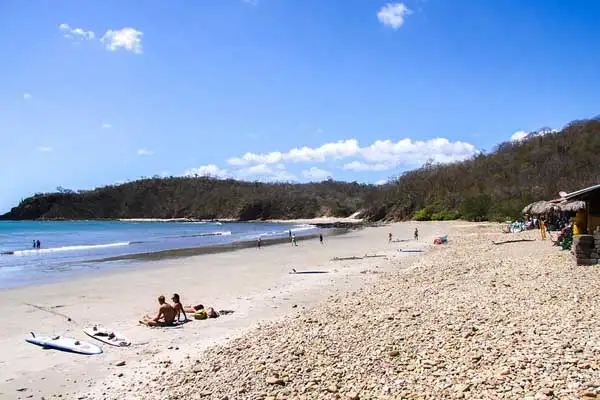
Whether it’s sun and sea, cool mountain breezes, or well-appointed colonial cities, you are in for a treat if you decide to live in Nicaragua. Whatever you are dreaming of, you can have in this gorgeous country. Whether you buy or rent, a couple can easily live in this country for $1,500 per month... and that includes everything! (A furnished home, all of your utilities, food, entertainment, eating out, WiFi, etc.)
The following are the best places to live in Nicaragua:
San Juan del Sur: Your Quintessential Beach Town
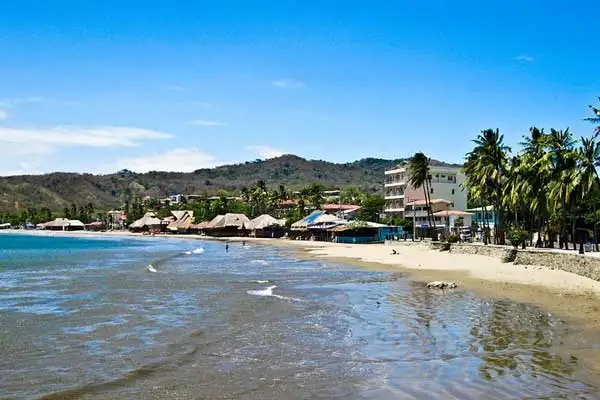
As small as it is, I would dub this tiny three-square block beachside city one of the most fun places I have ever visited in my life, Colorful, crazy, and charming, you will meet all kinds of people from all over the world. Add to the mix the warm and welcoming Nicaraguans and you already have a great “people place” to live. This is not a snowbird expat haven; those who come from other countries to stay in San Juan del Sur are permanent residents who stay all year.
Add to the fun 22 fabulous beaches, each one more beautiful than the next. Some have hotels and restaurants, others are virgin, and still, others have a few houses because they are private developments.
Many expats will show you the ropes when you arrive. Where’s the best pizza, the cheapest and most honest car mechanic, the best place to do your hair, the freshest produce, etc. It won’t take you long to integrate yourself into this town once famous for the number of live music venues it had all week long. The music scene is slowly making a comeback and that is “music to everyone’s ears.”
Granada: The Expat Colonial City
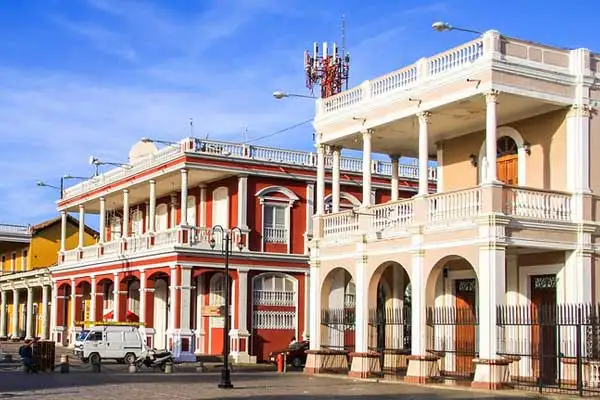
This refurbished colonial town is often touted as the prettiest colonial city in the Americas. With its colorful gold/yellow church in the town square as its cornerstone, you can make your way around the city easily if you just look for the church spires. With a population of around 150,000, Granada is a lovely place to live and has almost all the amenities you are accustomed to at home. Over the past 14 years, modern supermarkets and hardware stores have appeared in the major cities, including Granada.
Granada sits on the shores of Lake Colcibolca, the 19th largest lake in the world. On windy days, with its whitecaps, it looks more like an ocean. Inside the lake, over 300 tiny islands dot the coast near the city. You can take a boat tour through them. Most are uninhabited, but some have houses, restaurants and you can even rent an island for the weekend. Fancy yourself an island-owner? There are always some for sale.
With a fairly large expat community, Granada offers you restaurants and small businesses that cater to this group. Not only can you find a great variety of tasty local food in this city, but also pancakes, hamburgers, pizza, and pasta the way you like it.
Don’t miss a night out on the Calzada, the main street that runs from the central park all the way to the lake. At night, this street is cut off from traffic and becomes a European-like dining street with outdoor restaurants and cafes, and street entertainment. You never know what music you will hear or what shows you’ll see while you dine. Every night is different.
For those who have always dreamed of living in an old colonial house, Granada is the place to do it. Beautiful estates right in the center of town with hardwood floors and stairwells, wooden beams, and inside courtyards with swimming pools are not uncommon and many are for sale.
A peaceful, grand existence awaits you in Colonial Granada.
Leon: An Authentic Nicaraguan City
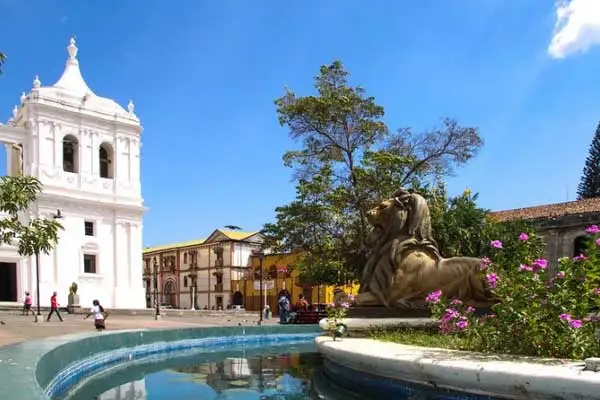
Many people think the colonial city of Santiago de los Caballeros de León, or just Leon as everyone calls it, personifies “authentic” Nicaragua. Founded in 1524, the second-largest city in the country certainly feels more Nicaraguan and less “gringofied” than Granada even though both provide stunning architecture. Leon used to be situated further east, but after the devastating eruption of Momotombo volcano in 1610, they moved the entire city, including whole cemeteries, to its present location. You can see the ruins of the original Leon at Leon Viejo.
A walking tour of Leon offers the largest number of old colonial churches than any other place in Nicaragua, all in different states of renovation or disrepair, but all fascinating. A must-see church is Cathedral de la Asunción, located in the town center, which took 100 years to build and is the biggest church in Central America. Pay a little extra to go up to the bell tower and then out onto the roof where you can get spectacular views of Leon and the surrounding countryside.
Leon remains an important city for industry, agriculture, and commerce. Major exportations include sugar cane, rice, cotton, peanuts, cattle, plantains, and sorghum. The city also manufactures shoes, processed cotton, and saddles.
Leon’s fame though, actually rests in its position as the liberal political and intellectual center of Nicaragua. The University of Leon, founded in 1812, became incorporated into the National University of Nicaragua system in 1952. Well-known as a university town, during the school year the population rises by a few hundred thousand. As you walk by the myriad coffee shops and restaurants, you can hear and see young people engaged in animated conversations about philosophy, politics, and life in general. Leon has fewer tourists than Granada. One reason is due to the scorching heat in the months leading up to the rainy season (March through May). Yet you will usually find backpackers, volunteers, and other foreigners integrating more with the locals here than in Granada.
Leon also has quite a revolutionary history. During the 1979 revolution against Somoza’s government, the Leon Sandinistas engaged in violent fighting in the streets. Somoza retaliated by bombing the city, killing not only fighters, but civilians as well. You can still see vestiges of the bombing at the San Sebastian church as well as bullet holes in buildings in the area.
Matagalpa: Green Nature at its Best
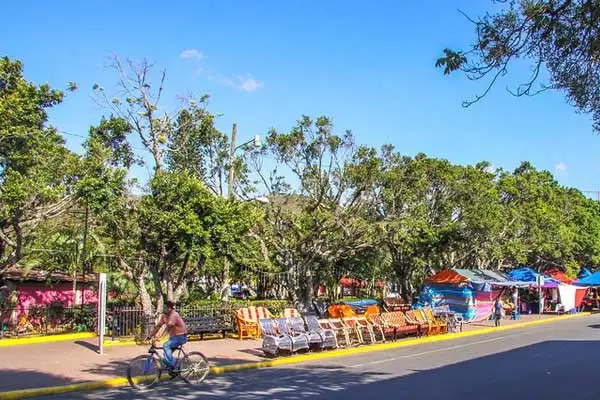
Matagalpa remains a great place to live for those who prefer a cooler climate. Since all of Nicaragua is tropical or subtropical, most cities sport a hot climate year-round, which not everyone likes. “The land of eternal spring” as Matagalpa is known, offers a climate much like that of San Diego, where there are days you need a jacket or sweater.
Due to this nicer climate and more rain that Matagalpa receives, the city and its environs remain green year-round (the rest of Nicaragua turns brown during the dry season with six months of no rain and constant hot, sunny days). You can find beautiful forests with lakes and streams and waterfalls in the countryside surrounding the city. Matagalpa itself, nestled at an altitude of 2,237 feet (682 metres) within the Apante mountain range, is probably the most picturesque city in Nicaragua.
Matagalpa’s accommodating climate makes it the leading agricultural center of Nicaragua. You will find cacao and coffee farms everywhere. Also, note the very large cattle and horse farms. Matagalpa is known for its horses and the yearly horse parade called the “Hipica.” An 8-hour long stream of the most gorgeous oiled, braided, and otherwise perfectly groomed horses pass down the streets as the city closes to traffic for the day to give the people a chance to see these beautiful animals “strut their stuff.” You’ll even get to experience horses trained to dance salsa!
Matagalpa’s exports include cacao, coffee, beef, cheese, vegetables, and fruits. The city produces flowers, wood, corn, beans, oranges, grapefruit, bananas, broccoli, and cauliflower for local consumption. The city’s economy also depends on eco-tourism where you can find nature hikes and places to stay like the lovely Selva Negra Wildlife Refuge that has over 300 acres (120 hectares) of land specifically dedicated to the conservation of the flora and fauna of the region.
Places You Can Avoid in Nicaragua
Managua: Nicaragua’s Capital City

Many people may disagree, but I stay away from Managua if at all possible. Countless expats have been hired to work in companies in the capital and certainly can live a luxurious life in one of the gated communities or areas where you can buy a huge mansion for a tenth of the price of the same property in your home country. However, as a capital city, Managua is not beautiful. Unfortunately devastated by a major earthquake in 1972, the city center was effectively moved from its location as several tall buildings in the hard-hit area had to be abandoned. Rebuilding the city actually did not start in earnest until the 1990s after the Nicaraguan Revolution that started in 1979 and ousted then-President Anastasio Somoza Debayle to welcome Daniel Ortega, leader of the Sandinista Party. Ortega is still in power on his third term as Comandante, a position he is likely to hold onto in the November election of 2021.
And as with many capital cities, Managua is not the safest place to live in Nicaragua. With many extremely poor barrios strung together and high unemployment after the civil unrest of 2018 followed closely by COVID-19, thefts are high. Social and health services exist but are often considered inadequate compared to other capital cities around the world. Garbage service is not the best and Managua is often criticized for the amount of trash on the streets of the city. That said, Nicaragua is still one of the safest countries to live in Latin America and the safest place in Central America. Guns are difficult to own and expensive, so very few people have them. Nicaragua is a country basically without cartels and gangs unlike the other Latin American countries, which contributes positively to personal safety.
One place I recommend not visiting at all is the Oriental Market in Managua. While you are probably not going to get hurt here, this largest open market in Latin America (over 135 blocks squared) is a totally chaotic place full of people who would like to relieve you of your personal property and goods. You might be surprised when you arrive home without your phone, your wallet, or even some of your purchases. The thieves are that good that you don’t even notice that your things are missing. There is a saying that if you can’t find it at the Oriental market, then it doesn’t exist. But if you do decide to go here, please travel with locals so you don’t get into trouble.
Nicaragua is a beautiful country and a safe one. I consider it a very good choice to live if you want to get out of the rat race, live a peaceful life, with fresh organic produce and meat by default, wonderful locals to make you feel comfortable, and no worries about finances. Nicaragua literally takes all the stress away. Try it!
